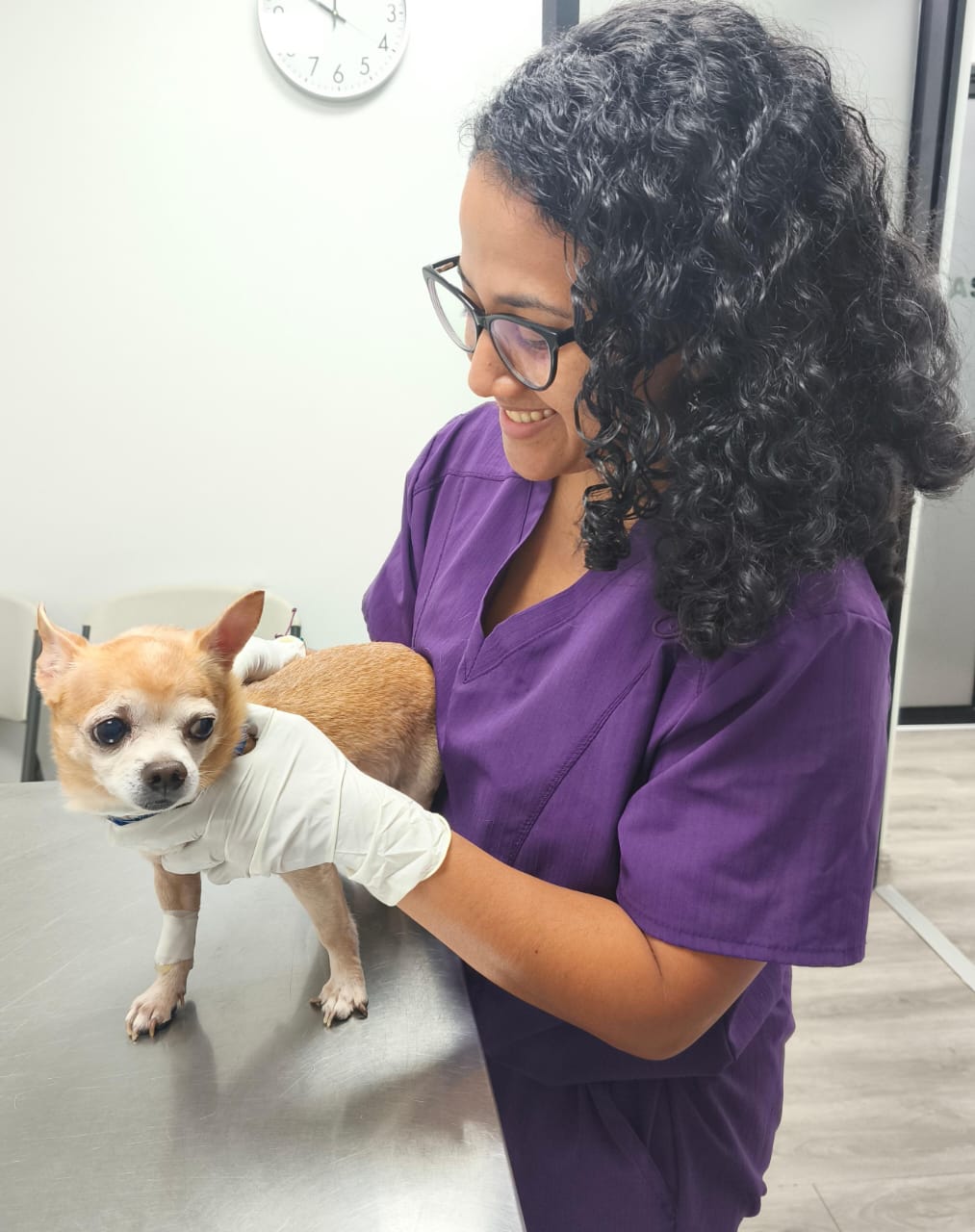When Anaís Villarreal decided to study veterinary medicine, she never imagined that her work would lead her to face an invisible enemy, one that does not distinguish between humans and animals: bacteria resistant to antibiotics, a type of antimicrobial.
‘Since I was little, I really liked science, especially research and medical sciences,’ she recalls. ‘Of course, I was attracted to working with animals, but also to biology, the environment, understanding how life works.’
Today, Anaís divides her time between teaching at the University of Panama and her private practice as a specialist in veterinary dermatology. In her clinic, cases of recurrent skin infections are part of the routine… but they are also a reflection of an increasingly worrying problem.
Anaís works with several clinics, has a private specialist practice and sees patients in different parts of the country. In her experience in dermatology, skin infections, known as pyoderma, are an everyday occurrence. And it is increasingly common for animals to arrive with multi-resistant infections.
AMR has changed the way Anaís works. Many of the patients who come to her clinic have already been treated unsuccessfully with commonly used antibiotics.
Patients who come to me often have multidrug-resistant infections. Previously, it was not so common to do cultures, but now international guidelines are clear: if an infection does not respond to treatment, a culture and antibiogram must be done. There is no way around it.
The challenge is not only clinical, but also educational. Anaís must explain to owners that antibiotics are not always the immediate solution and that laboratory tests are essential to guide effective treatment. But convincing them is not always easy. In addition to the additional cost, there is a perception that animal problems are completely unrelated to human health. If a pet has a resistant bacterium, there is a possibility that people in the household also carry it, albeit unknowingly.
‘It’s not that the bacteria stay in the dog. If my animal has a multi-resistant bacterium, there is a possibility that I will also have it. All members of the household share microbiomes. It is a public health issue, not just a veterinary one.’
Arya’s case: a possible story of shared resilience
Among the many patients she remembers, there is one that particularly stands out: Arya, a bull terrier with sensitive skin who came to her clinic with an infection that did not respond to any treatment.
‘The dog had already been treated several times without success. The culture showed a multi-resistant bacterium. We began treatment based on the results, but there was minimal improvement. We then did a genetic sequencing test… and the resistance panel was horrific: the bacteria did not respond to anything.’
The case became even more complex when a detail came to light: Arya’s owner worked in a hospital. The dog was probably not the only one affected by resistant bacteria. There was a possibility that the owner, due to her contact with hospital environments, also had a resistant microbiome.
Thanks to an accurate diagnosis and careful choice of treatment, Arya managed to recover, but the experience left a deep impression on Anaís.
‘It’s frustrating. You do everything you can, and sometimes there’s no answer. But I also learned that we need to change the way we treat things: stop thinking that antibiotics are the solution to everything. In dermatology, treatment often starts with antiseptic baths, not pills.’
Understanding a problem is the first step towards solving it. That is why effective communication about AMR is essential to changing behaviours that accelerate this phenomenon.
‘Many owners are used to treatment being a pill or an injection. When I tell them that treatment is a bath twice a week, they find it hard to believe me. That’s why education is key.”’
Today, in her practice and at university, Anaís spends time talking about the responsible use of antimicrobials and the importance of prevention.
World AMR Awareness Week (WAAW) is an annual campaign that seeks to promote the responsible use of antimicrobials and encourage good practices that help reduce the emergence and spread of resistant pathogens. WAAW is held every year from 18 to 24 November
Anaís knows that her work has an impact that transcends veterinary medicine. Every case of antimicrobial resistance (AMR) she treats is also an opportunity to protect the health of people and other animals.
‘When we treat an animal well, we are also caring for its family. And when we educate a guardian, we are helping to prevent resistance that could affect the entire community.’
Her message is clear: resistant pathogens do not distinguish between species, borders, or professions. We are all connected, and the only way to stop it is to act together. ‘The health of animals, people and the environment is one. And I see that every day.’
More information:

